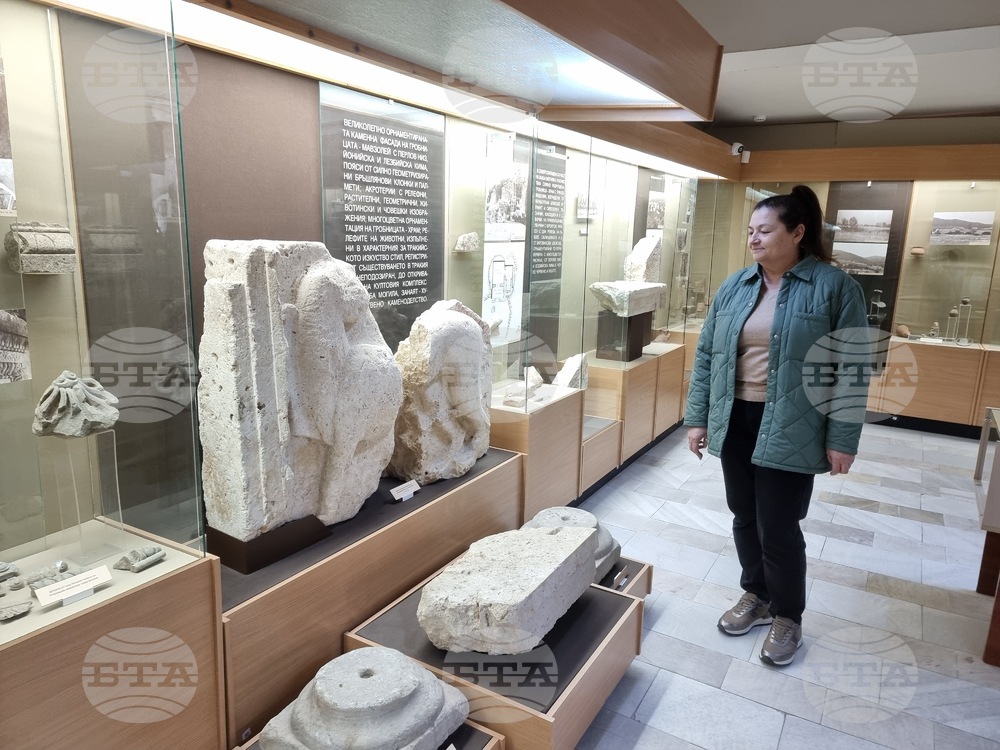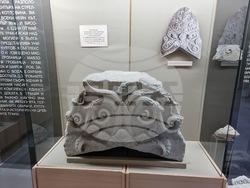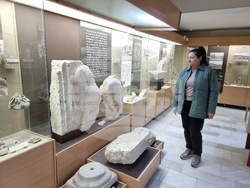site.btaStrelcha Panther Relief Is Part of Oldest Monumental Buildings in Ancient Thrace


The relief of a panther or lion from the Archaeological exposition in Strelcha Historical Museum has been selected to be part of the exhibits of fourteen museums from Bulgaria that are participating in an upcoming exhibition at the J. Paul Getty Museum in Los Angeles, California. The Ancient Thrace and the Classical World: Treasures from Bulgaria, Romania, and Greece exhibition features more than 150 artifacts. It will be on between November 3 and March 3, 2025.
The relief, discovered on a limestone slab in Zhaba Mound near the town of Strelcha, depicts a panther or a lion from the third tomb in the Mound. The left part was chosen to be exhibited in the Getty Museum, and the right one, which is in slightly worse condition, remained in Strelcha museum's collection, said Museum Director Nikoleta Petkova.
She explained that the Zhaba Mound is one of the most interesting archaeological monuments of Ancient Thrace. Its main feature is that there are two tombs under one mound. One is on the southeastern side, which is covered with green volcanic tuff, and the second is on the northwestern side, made of granite and the only one on the territory of Ancient Thrace with such a direction.
There was a third tomb from where the panther relief came, for parts of the limestone relief have been found throughout the mound. "What is interesting in this case is that, according to specialists, this tomb is one of the oldest monumental constructions in Thrace", said Petkova, adding that if all the others "are dated around the Hellenistic period (330-325 BC)", while the relief in question is from a slightly earlier period. She said that it is currently not known where the relief stood and whether it is from an earlier demolished tomb, which some assume may have been destroyed to make room for the other two.
"It is generally difficult to find reliefs from this period, and in this case we have them on both sides of the gabled entrance and additional coloured decoration in blue, black and red", Petkova said.
She expressed hope that soon the Strelcha Museum will be able to show the tomb in an adequate way as part of its exposition. Strelcha Municipality has been trying for several years to prepare a project to make the tomb appropriately accessible, which has not been done so far. "The tomb should be conserved because it has been open for a long time", Petkova stressed.
The mound is one of the largest in Bulgaria with a diameter of 90 m and a height of 20 m. It was explored in the late 1970s by a team led by Dr. Georgi Kitov.
The Strelcha Historical Museum is relatively new, but has a potential to broaden and modernize its expositions. The largest part of the Archaeology exposition features finds from the Frog Mound: stone reliefs, parts of a chariot, an acroterion with the face of the gorgon Medusa.
Nikoleta Petkova said that the museum was established in 2002 and before that it had had the status of a museum collection. It is located in the Hadzhigrozev House with expositions on three floors. The archaeological exposition is on the first floor, the history of Bulgarian lands between the 15th and the 19th centuries is presented on the second, and the third hosts the “Education" and "April Uprising" expositions, currently being prepared.
/MT/
Additional
news.modal.image.header
news.modal.image.text
news.modal.download.header
news.modal.download.text
news.modal.header
news.modal.text







